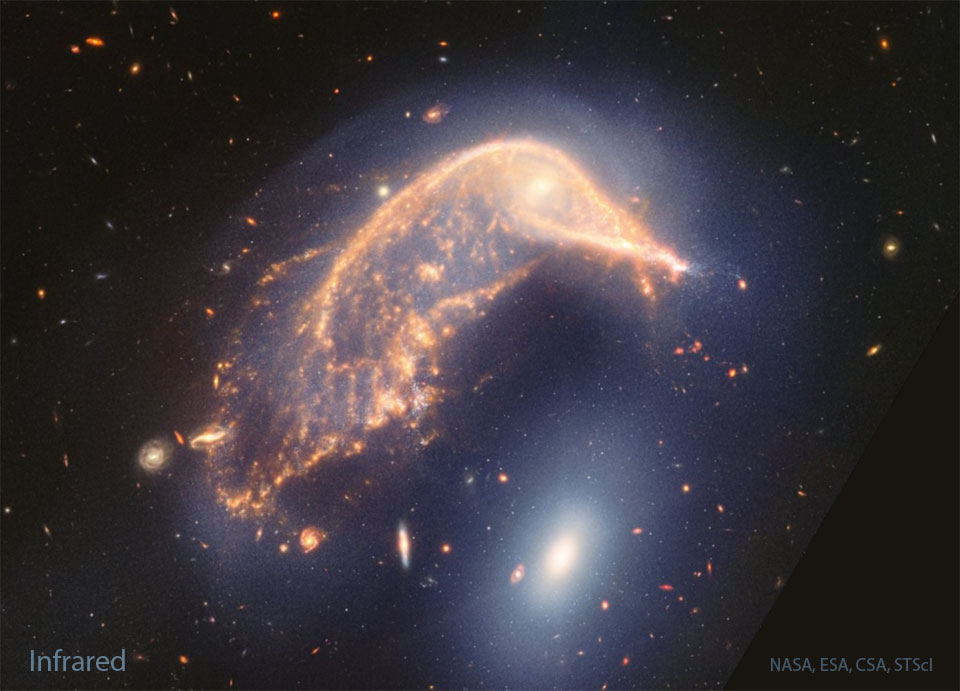Arp 142 :來自韋伯望遠鏡的相互作用星系
Arp 142: Interacting Galaxies from Webb

發表日期:2024-07-30
在一些人看來,它就像一隻企鵝。但對於研究宇宙的人來說,它是兩個大星系相互作用的有趣例子。就在幾億年前,上面的 NGC 2936 很可能是一個普通的螺旋星系:旋轉、創造恆星,忙著自己的事情。 後來,它離下面的大質量橢圓星系NGC 2937 太近了,於是就俯衝了下去。 它們一起被稱為 Arp 142 ,出現在這幅新的韋伯紅外影像中,與之相對的是一張可見光哈勃影像。 NGC 2936 在這種近距離引力作用下不僅發生了偏轉,而且還發生了扭曲。 當大質量星系相互靠近時,氣體通常會凝結成新的恆星。 一個年輕的恆星群就像企鵝的鼻子一樣出現在上部星系的右側,而在螺旋星系的中心,明亮的恆星聚集在一起就像一隻眼睛。 在十億年之前,這兩個星系很可能會合併成一個更大的星系。 探索你的宇宙隨機 APOD 生成器
原文:To some, it looks like a penguin. But to people who study the universe, it is an interesting example of two big galaxies interacting. Just a few hundred million years ago, the upper NGC 2936 was likely a normal spiral galaxy: spinning, creating stars, and minding its own business. Then it got too close to the massive elliptical galaxy NGC 2937, below, and took a dive. Together known as Arp 142, they are featured in this new Webb infrared image, while a visible light Hubble image appears in comparison. NGC 2936 is not only being deflected, but distorted, by this close gravitational interaction. When massive galaxies pass near each other, gas is typically condensed from which new stars form. A young group of stars appears as the nose of the penguin toward the right of the upper galaxy, while in the center of the spiral, bright stars together appear as an eye. Before a billion years, the two galaxies will likely merge into one larger galaxy. Explore Your Universe: Random APOD Generator
※ 本文由萌芽機器人自動轉貼自每日一天文圖(Astronomy Picture of the Day,APOD),原文為英文,正體中文是透過 DeepL 翻譯及 OpenCC 進行自動處理,內容僅供參考,若有任何錯誤之處還請見諒!
關於每日一天文圖:每日一天文圖網站是美國國家航空暨太空總署與密西根理工大學提供的服務,網站每天提供一張影像或圖片,並由天文學家撰寫扼要說明其特別之處。